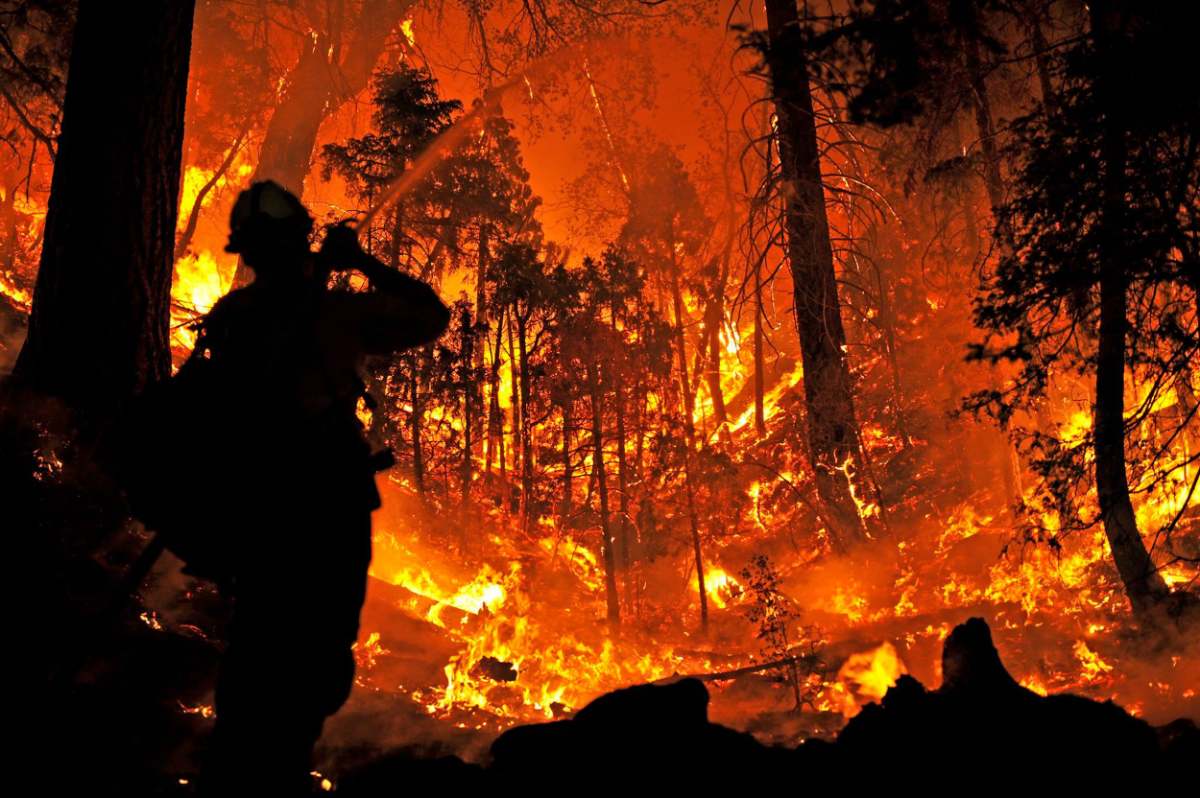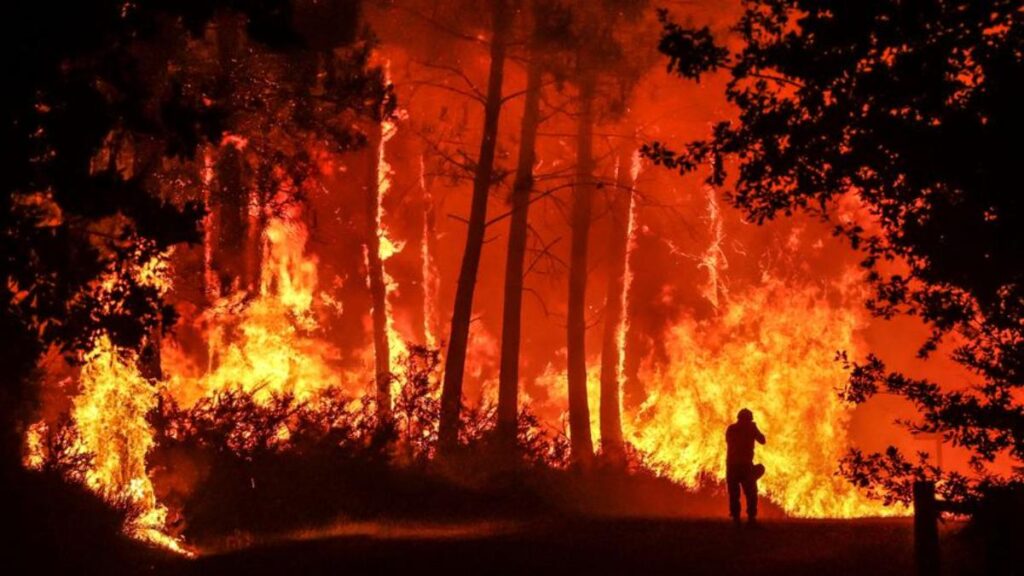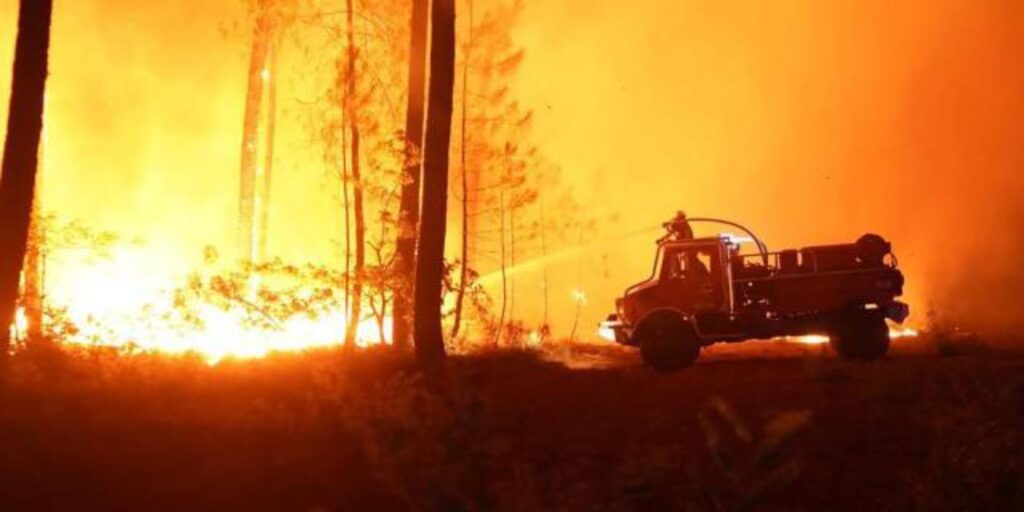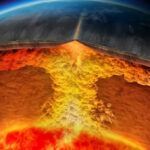This summer has seen the world set ablaze on all sides. Even the Arctic, a region that has been virtually untouched until now, is facing a growing risk of uncontrolled fires, say United Nations experts. Unusual fires and climate change are mutually aggravating. Governments are being called upon to shift their investments to prevention and readiness to deal with the risk of megafires. But what exactly is a megafire? When can a fire be considered a megafire? What methods do we have to fight it?

Megafires represent 3% of all fires, but are responsible for more than 50% of the world’s burned areas. In the United States, burned areas have increased by 1200% over the last four decades. This year, these fires are occurring in a sustained and extreme way almost everywhere in Europe. Recent data on forest fires confirm what we have long feared: Forest fires are spreading, burning nearly twice as much tree cover today as they did 20 years ago. In a pessimistic scenario of greenhouse gas emissions between 2081 and 2100, it is estimated that the fire season in the south of many European countries will increase from one month, as it is today, to two or even three months.
Moreover, according to data from the European Forest Fire Information System (EFFIS), from January 1 to July 30, 2022, 600,000 hectares (1,500,000 acres) went up in smoke in the European Union – more than half of them in the last two months alone. Not to mention that forest fires now ravage an additional 7 million acres (3 million hectares) each year, an area the size of Belgium, according to satellite data compiled by Global Forest Watch (GFW), the World Resources Institute (WRI) and the University of Maryland.
The situation is dramatic and the loop we have entered seems to have no solution, climate change favors megafires, which themselves accelerate climate change. Understanding the underlying mechanics of these fires, their origin and evolution, could help us fight and prevent them.
A Lack of Scientific Definition, but Clear Criteria

The notion of megafires is a new case in the typology of forest fires in Europe, because of its emergence linked to climate change. Covering different realities in different countries, its scientific meaning remains to be defined.
According to NASA, between climate change and nearly a century of fire exclusion, wildfires have become more extreme in terms of size, severity, the complexity of behavior, and resistance to suppression. These fires are commonly referred to as megafires and are at the extremes of historical variation.
A few criteria are used to define these extraordinary fires, such as the speed of propagation, the intensity of propagation, and the area of burned the surface. The duration (several weeks or even months) and the uncontrollable dimension are the main indicators specific to megafires which have more meaning in countries with large areas like the United States.
Meteorologists are not yet able to predict wildfire outbreaks, but there are three conditions that must be present for a wildfire to occur. Firefighters call it the fire triangle: fuel, oxygen, and heat source. 90% of wildfires are started by people, but dry weather, drought and high winds can create a recipe for the absolute disaster, which can turn a spark into a fire that lasts weeks or months and consumes tens of thousands of acres.
Lightning is another possible cause of forest fires. Scientists have found that a 1 degree Celsius (1.8 degrees Fahrenheit) increase in global warming triggers a 12% increase in lightning activity. Since 1975, the number of fires started by lightning has increased by 2 to 5%.
The Pyrocene Era

Climate change is likely a major factor in the increase in fire activity. Extreme heat waves are already 5 times more likely today than they were 150 years ago and are expected to become even more frequent as the planet continues to warm. Warmer temperatures dry out the landscape and help create the ideal environment for larger and more frequent wildfires. This in turn leads to higher emissions from wildfires, further exacerbating climate change and contributing to more fires in a fire-climate loop. This is called the Pyrocene era we have entered.
Fires like megafires are so large and intense that they create their own environment, making them all the more uncontrollable, going off in all directions without firefighters being able to anticipate. Indeed, the force released by large fires like megafires creates clouds called pyrocumulus. Like all cumulus clouds, pyrocumulus forms over sources of intense heat. They can be seen at the beginning of a fire, when the temperature of the ground surface increases. Hot air is quickly released and as it rises into the atmosphere, it cools. The water contained in this air pocket, coming from the burned plants, condenses. This creates massive smoke columns filled with heat and ash.
Depending on the stability and humidity conditions available, there could be pyrocumulus humilis, mediocris, congestus or even pyrocumulonimbus formed over large fires. Pyrocumulus humilis and mediocris cut off the solar radiation. This may reduce local heating initially and help fight a forest fire, but by creating a cloudy area next to a sunny one, they increase the winds at the fire location which does harm. The pyrocumulus congestus, on the other hand, can give rain. Finally, the pyrocumulonimbus can reach the tropopause and generate sooted hail, lightning, downbursts, and even tornadoes in addition to rain.
The megafires have a frightening capacity of propagation, because the pines are especially flammable. It is important to note that a usual fire in a pine forest during warmer weather in winter, spring or fall, burns the vegetation and plant litter on the surface, but does not normally burn the tree canopy. This reduces the risk of fire in summer since some of the flammable surface vegetation has been burned. But the same forest burns almost completely when the fire occurs in summer.
When the thorns or the resin of the pine catch fire, it releases a gas that in contact with the air burns again. And in parallel, when the flames meet the colder air at ground level, the air mass is carried upwards, producing an internal depression which is the wind created by the fire itself. A fire like this can then spread at more than 4 mi/h (7km/h).
Dramatic Consequences on the Planet
Forest fires actually have the ability to warm the entire planet as revealed by a 2016 NASA study. In ecosystems like boreal forests, which store more carbon than any other terrestrial ecosystem on the planet, the effects of climate change are felt twice as more.
In fact, fires ravaged boreal forests in the vast expanses of northern Canada in May 2016 and continued for months, consuming millions of acres of trees and burning the rich organic soil of the forest floor, which serves as a great store of carbon. For every degree our planet warms, the forest needs a 15% increase in precipitation to offset the increase in drought.
When the forest burns the ashes of these megafires are deposited on the glaciers and precipitate the melting of ice: This is what happened in New Zealand, the glaciers have taken a caramel color with the ash from the Australian fires, and as a result reflected less light and melt faster.
Not to mention that mortality is higher than in a typical fire, and the environmental damage is often long-lasting, especially if such fires are allowed to recur year after year, bringing some plant and animal species closer to extinction. The fires that affected Australia from September 2019 through early 2020, caused the death of approximately 500 million animals.
How to Prevent Large Fires Like Megafires?
Many European countries have been confronted with an increase in the number, size or intensity of fires in the last decades. They have often opted for an enhanced fire suppression strategy. However, this strategy is not sustainable in the long term, as climate change and landscape modification are already leading to an increase in large fires.
If the risk of fire increases with global warming, the question is how to limit fire starts, but also the size of fires. For the forest, the maintenance and intensification of wood harvesting is the priority component of fire prevention, just like agricultural activities. These areas serve as firebreaks that firefighters can rely on in case a fire occurs because they are much less dense than forests and the soil is cleaner, not littered with dry vegetation, a perfect fuel for fires.
According to a recent report by the United Nations Environment Programme (UNEP) and the GRID-Arendal, climate change and changing land use are expected to make uncontrolled fires more frequent and intense. Experts predict a global increase in extreme fires of up to 14% by 2030, 30% by 2050 and 50% by the end of the century. The paper calls on governments to radically change the way public spending on wildfires is allocated, by directing investments towards prevention and preparedness, rather than reaction and response.
The publication calls on governments to adopt a new “fire preparedness formula” in which two-thirds of spending would be on planning, prevention, preparedness, and recovery, and one-third on response. Currently, direct responses to wildfires typically receive more than half of the corresponding spending, while planning and prevention receive less than 1%. The authors call for combining data and science-based monitoring systems with indigenous knowledge, as well as strengthening regional and international cooperation to prevent fires.
That is why in 2019, the European Commission created “rescEU” to improve disaster risk management. Member countries pool their resources and build a pan-European pool of equipment. For example, in the event of an emergency, Croatia, France, Greece, Italy, Spain, and Sweden offer a fleet of 12 airplanes and six water bomber helicopters. In exchange, the less equipped states pay a financial contribution. The system also includes Iceland, Macedonia, Montenegro, Norway, Serbia, and Turkey, which are not members of the European Union.
Humans Are the Main Reason for Forest Fires
Whether it is through global warming or a simple act, in nine cases out of ten forest fires are of human origin – criminal or accidental. In other words, they are preventable. Preventive forest fire fighting and public planning policies can and should play a role in the management and evolution of these events.
Furthermore, forest maintenance and brush clearing are pointed out as one of the causes of the increase in the frequency of megafires. Individuals, and sometimes even municipalities, do not carry out the necessary work to clear the undergrowth of dead vegetation and elements that promote the spread of fire. Improved forest management, like flood protection, is needed to combat wildfires.



